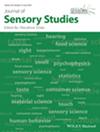This study aimed to determine the compromised acceptance threshold (CAT) and the hedonic rejection threshold (HRT) for consumers of sweetened coffee to propose a strategy to reduce the sucrose addition by studying the behavior of consumers of sweetened and unsweetened coffee. From the sample that showed the highest acceptance (control sample, with 12% added sucrose), it was possible to reduce the sucrose addition by up to 18% without compromising acceptance (CAT = 9.76%) and by up to 52% without promoting the rejection of the beverage (HRT = 5.61%). Consumers who were reducing the sucrose addition exhibited a reduction in CAT (6.54%). Consumers of sweetened and unsweetened coffee had different perceptions regarding the sweetened beverage, thus, research involving coffee consumption should be segmented between these two groups. As a strategy, we suggest that the reduction of sucrose should be gradual and associated with information about its health benefits.
The results are relevant for those interested in understanding the habits of consumers of sweetened and unsweetened coffee and providing an estimate of the tolerance of consumers of sweetened beverages when reducing the sucrose content in coffee beverages. Considering the volume and regularity of coffee consumption by Brazilian consumers, these findings can contribute to the development of a strategy to reduce sugar consumption. This information also supports the production sector in developing ready-to-drink beverages, prepared by industries and coffee shops or available in vending machines, indicating that the concentration of added sugar provided can be reduced, as long as a sufficient amount is maintained not to impair the acceptance of the beverage. Additionally, the data are important for sensory analysis researchers, enabling them to better adapt coffee beverage tasting conditions to consumer expectations and, thus, obtain more reliable results.


